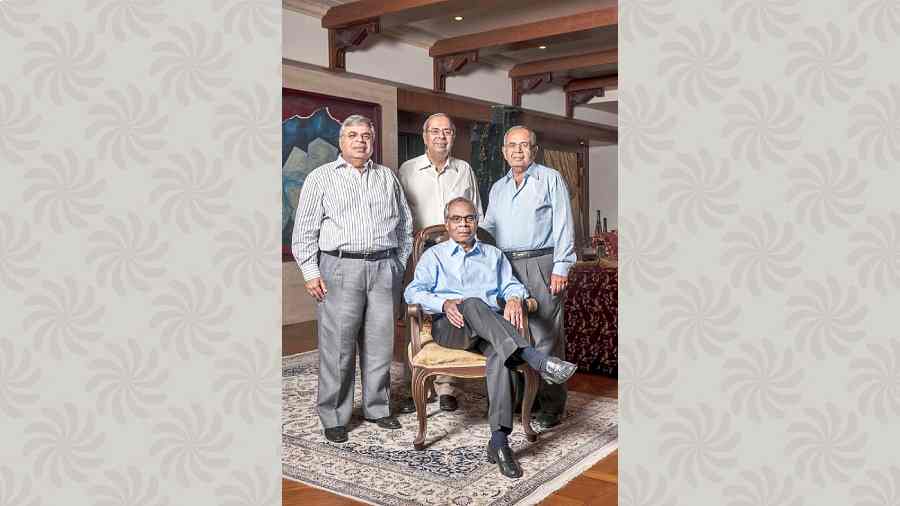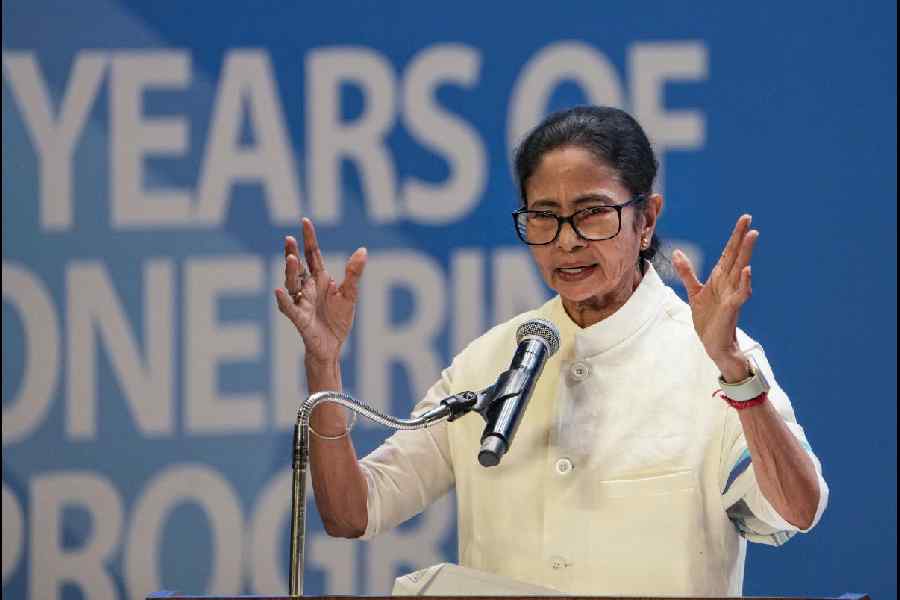Off to the movies
The Institute of Directors in London practically resembled a Bollywood film set recently with three Hinduja brothers — Gopichand, Prakash and Ashok (the eldest, Srichand, has been unwell for some years) — and the film critic, Ajit Rai, who was releasing his book, Hindujas and Bollywood, all present. The UK’s Indian elite, who had been invited to a vegetarian high tea, made up several hundred extras. The Hindujas have either financed or distributed 1,200 Hindi movies, including Sangam, after which their parent company is named. In fact, Srichand had told me how the family had taken Hindi movies to non-traditional territories such as Iran, where Raj Kapoor’s appearance at a premiere nearly triggered a riot among fans.
Gopi said, “I can never forget the first movie, Shree 420, when it was released... The whole street in Tehran was packed and there was no way for Raj Kapoor to get out from the theatre. So I had to ring up the police and get him a van where they put criminals. And from the back door, we took him out.” There was a special appearance by Akshay Kumar who told the Hindujas: “You have distributed 1,200 films but what now? That is in the past but when will you return? Now is the time. I think Bollywood needs you... I’m sure a lot of people would be very happy if you came back to this industry.” Gopi’s answer was a crowd-pleaser: “Akshayji, I can assure you, if you gave me some good suggestion, I will invest money in it.” Also present was the then British foreign office minister, Lord Tariq Ahmad, who promised to act as the minister for Bollywood.
Many stories
Richard Blurton, who worked for the British Museum for 32 years and retired in 2018 as head of its South and Southeast Asia section, has spent the last four years writing his 320-page book with over 500 illustrations, India: A History in Objects, which has been published jointly by Thames & Hudson and the British Museum. The magnificent book, which goes back 1.5 million years, is split into six chapters. Incidentally, he sees the Islamic period as being very much a part of Indian history.
Ahead of the large turnout for the book’s official launch at the British Museum, we met for a chat at the Dulwich Gallery in south London when he explained: “The very earliest Muslim presence in India is through local traders. That’s how Islam first came to India, not through Mahmud of Ghazni sweeping down and destroying the Rajput kingdoms. That comes much later. People assume that the arrival of Islam is all concerned with battle and destruction and slaughter and mass conversion. Of course, later, that is part of the story. But it’s not the earliest story and it’s not the only story. As historians, we have to be incredibly careful.”
Blurton, who has been to India 50 times since his first trip in 1970, called his book “an offering of love. It has been a sort of love affair, for sure. But I feel, in an extremely modest way, pleased to be part of a long tradition of people who’ve been seduced by India.”
Bengali lessons
Among those attending the launch of Richard Blurton’s book was the academic and author of books on Bollywood, Rachel Dwyer, now Professor Emerita at the School of Oriental and African Studies, who confirmed to me that she is learning Bengali.
“I’ve been learning to read Bengali in lockdown using William Radice’s Teach yourself Bengali and teaching materials produced by the University of Chicago,” she said. “I’ve wanted to learn Bengali for years, to read writers including Tagore, and to understand films and to make longer visits to West Bengal and Bangladesh. And to talk to friends, of course.
“I’ve been using Clinton Seely’s reader in Bengali prose, which introduced me to my favourite writer so far, Parashuram. I have seen Ray’s film, Parash Pathar, but found Parashuram’s taut prose, vivid characterisation and brilliant humour totally engaging. Being forced to read slowly because of my lack of knowledge allowed me to savour his style even more.”
Art bazaar
The big news from Sundaram Tagore is that he is opening a new art gallery in London to add to the ones he has in New York, where he lives, and in Singapore. Political unrest forced him to close his gallery in Hong Kong. His mission is to promote “cross cultural dialogue by artists living outside their home belt”.
Sundaram has brought works by some of the artists he represents — Hiroshi Senju, Sohan Qadri, Miya Ando, Karen Knorr and Udo Nöger, among them — to Masterpiece, the London fair where very rich folk fly in to buy the most beautiful (and expensive) pieces of art. I was impressed that the organisers chose a dramatic light installation by another artist he represents, the PakistaniAmerican Anila Quayyum Agha, to adorn the entrance to Masterpiece.
“London is the ideal space because it’s a truly a global city,” said Sundaram. “In addition, it’s a home for Indians and South Asians. Indians living abroad buy a lot of art.”
Footnote
For Indians, there is always something to discover in London, a home away from home. Walking back to Tottenham Court underground station from the British Museum through Bedford Square, I stopped by a Blue Plaque which read: “RAM MOHUN ROY 1772-1833 Indian Scholar and Reformer lived here.”










